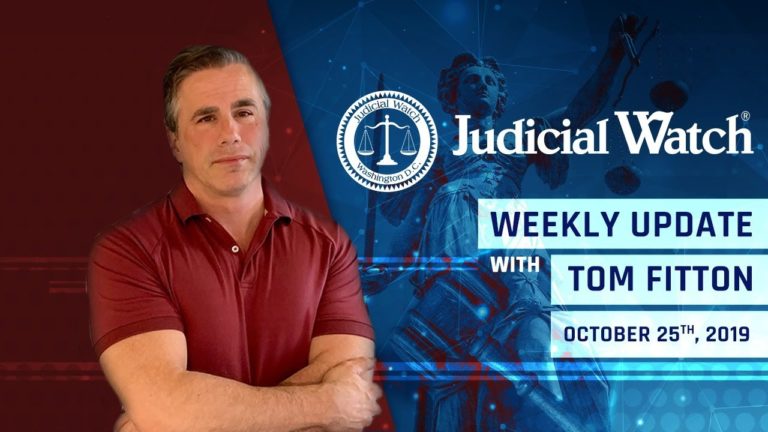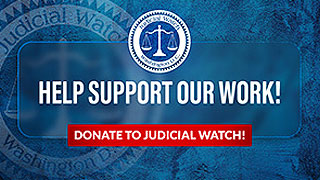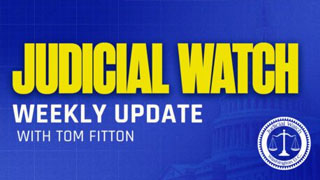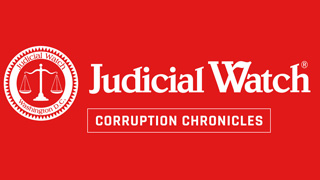
Anti-Trump Collusion by Media

AP Reporters Pushed FBI to prosecute Manafort
New Benghazi Documents Confirm Clinton Email Cover-Up
The State Department Monitored People It Didn’t Like
AP Reporters Pushed FBI to prosecute Manafort
The Associated Press, founded in 1846 as a cooperative association of newspapers, has enjoyed a reputation for independence and fairness over the years. Lately, however, it has come under criticism for what some see as a left/liberal bias.
Certainly, what we have just learned about its dealings with anti-Trump partisans in the Justice Department does nothing to improve our perception of the news service.
We have released two sets of heavily redacted FBI documents – 28 pages and 38 pages –about an April 11, 2017, “off-the-record” meeting set up by then-Chief of the Justice Department’s Criminal Fraud Section Andrew Weissmann.
The meeting included representatives of the DOJ, the FBI and the Associated Press in which AP reporters provided information on former Trump Campaign Director Paul Manafort, including the numeric code to Manafort’s storage locker.
Two months later, in early June, Weissmann was hired to work on Robert Mueller’s special counsel operation against President Trump. Weissman then reportedly spearheaded the subsequent investigation and prosecution of Manafort.
Included among the new documents are two typed write-ups of the meeting’s proceedings and handwritten notes taken during the meeting by two FBI special agents.
According to a June 11, 2017, FBI write-up:
The purpose of the meeting, as it was explained to SSA [supervisory special agent, redacted] was to obtain documents from the AP reporters that were related to their investigative reports on Paul Manafort.
No such documents were included in the documents released to us.
During the meeting, the AP reporters provided the FBI information about a storage locker of Manafort (the Mueller special counsel operation raided the locker on May 26, 2017):
The AP reporters advised that they had located a storage facility in Virginia that belonged to Manafort…The code to the lock on the locker is 40944859. The reporters were aware of the Unit number and address, but they declined to share that information.
The reporters shared the information that “payments for the locker were made from the DM Partners account that received money from the [Ukraine] Party of Regions.”
The notes suggest the AP pushed for criminal prosecution of Manafort:
AP believes Manafort is in violation of the Foreign Agents Registration Act (FARA), in that Manafort send [sic] internal U. S. documents to officials in Ukraine AP has documentation proving this, as well as Manafort noting his understanding doing so would get him into trouble.
AP asked about the U.S. government charging Manafort with violating Title 18, section 1001 for lying to government officials, and have asked if the FBI has interviewed Manafort. FBI and DOJ had no comment on this question.
Also, according to the FBI write-up, “The AP reporters asked about FARA [Foreign Agents Registration Act] violations and they were generally told that they are enforceable.”
Although, according to the FBI write-up, “no commitments were made [by DOJ] to assist the reporters,” Andrew Weissmann asked the AP to contact foreign authorities to follow up:
[A]fter the meeting was started and it was explained to the reporters that there was nothing that the FBI could provide to them, the reporters opted to ask a series of questions to see if the FBI would provide clarification. No commitments were made to assist the reporters in their further investigation into the life and activities of Paul Manafort and the AP reporters understood that the meeting would be off the record.
***
They [AP reporters] reiterated what they had written in their article, which was a response from the Cypriot Anti-Money Laundering Authority (MOKAS) that they [MOKAS] had fully responded to Department of Treasury agents in response to [Treasury’s] request. The AP reporters were interested in how this arrangement worked and if the U.S. had made a formal request. FBI/DOJ did not respond, but Andrew Weissman [sic] suggested that they ask the Cypriots if they had provided everything to which they had access or if they only provided what they were legally required to provide.
***
The AP reporters asked if we [DOJ/FBI] would be willing to tell them if they were off based [sic] or on the wrong traack [sic] and they were advised that they appeared to have a good understanding of Manafort’s business dealings.
The reporters asked about any DOJ request for the assistance of foreign governments in the U.S. Government’s investigation of Manafort:
The AP reporters asked if there had been any official requests to other countries. FBI/DOJ declined to discuss specifics, except to state that the Mutual Legal Assistance Treaty requests are negotiated by diplomats, so they should remain at that level.
AP reporters told the FBI about payments in the “black ledger,” a Ukrainian record of allegedly illegal off-the-books payments:
The reporters advised that their next report, which was scheduled to come out in the next day or so after the meeting, would focus on confirming, to the extent that they could payments in the so called “black ledger” that were allegedly made to Manafort.
***
The impression that their sources give is that Manafort was not precise about his finances, specifically as it related to the “black ledger.” The AP reporters calculated that he received $60 to $80 million from his work in Ukraine, during the time period the ledger was kept. According to their review of the ledger, it appears that there is a slightly lesser amount documented based on all of the entries. The AP reporters accessed a copy of the ledger online, describing it as “public” document (Agent’s note – the ledger has been published in its entirety by the National Anti-Corruption Bureau of Ukraine, after it was given to them by Sergei Leshenko, Ukrainian RADA member [Ukrainian parliament] and investigative reporter.)
The AP reporters discussed an extensive list of issues, companies, and individuals that they felt should be investigated for possible criminal activity, including a $50,000 payment to a men’s clothing store; a 2007 meeting with Russian oligarch Oleg Deripaska; Loav Ltd., which was possibly incorporated by Manafort; NeoCom, which the AP reporters implied was incorporated solely to cover up money laundering; and other matters.
The reporters described an “internal U.S. work product that had been sent to Ukraine.” The reporters described it as an “internal White House document.” The FBI report stated that it “was not clear if the document was classified.”
Evidently referring to these documents, Manafort’s lawyers alleged that Weissmann provided guidance and leaked grand jury testimony to the AP reporters investigating Manafort.
This document production comes in our April, 2019 Freedom of Information Act (FOIA) lawsuit against the U.S. Department of Justice (Judicial Watch v. U.S. Department of Justice (No. 1:19-cv-00879)) filed after the FBI failed to respond to a July 5, 2018, FOIA request for:
- All records concerning the April 2017 meeting between Department of Justice and FBI personnel and representatives of The Associated Press. This request includes all notes, reports, memoranda, briefing materials, or other records created in preparation for, during, and/or pursuant to the meeting.
- All records of communication between any representative of the Department of Justice and any of the individuals present at the aforementioned meeting.
Under Mueller, Weissmann became known as “the architect of the case against former Trump campaign chairman Paul Manafort,” which produced no evidence of collusion between Manafort, the Trump campaign and Russian operatives. It indicted Manafort on unrelated charges.
In an October 2017 article describing Weissmann as Mueller’s “Pit Bull,” The New York Times wrote, “He is a top lieutenant to Robert S. Mueller III on the special counsel investigation into Russian interference in the 2016 election and possible links to the Trump campaign. Significantly, Mr. Weissmann is an expert in converting defendants into collaborators — with either tactical brilliance or overzealousness, depending on one’s perspective.” Weissman oversaw the pre-dawn home raid of Manafort in what one former federal prosecutor described as “textbook Weissmann terrorism.” Weissmann reportedly also attended Hillary Clinton’s Election Night party in New York.
In May 2019, we uncovered 73 pages of records from the DOJ containing text messages and calendar entries of Weissmann showing he led the hiring effort for the investigation that targeted President Trump.
In December 2017, we made public two productions of DOJ documents showing strong support by top DOJ officials for former Acting Attorney General Sally Yates’ refusal to enforce President Trump’s Middle East travel ban executive order. In one email, Weissmann applauds Yates, writing: “I am so proud. And in awe. Thank you so much. All my deepest respects.”
These latest shocking FBI reports evidence a corrupt collusion between the DOJ and the media, specifically The Associated Press, to target Paul Manafort. These reports are further reason for President Trump to pardon Manafort and others caught up in Mueller’s abusive web.
This new evidence strengthens the widespread belief that the media are in league with the anti-Trumpers in the administration and in the Congress.
New Benghazi Documents Confirm Clinton Email Cover-Up
Foggy Bottom, the nickname given to the State Department’s neighborhood in the District of Columbia, would seem an appropriate term for the fog its bureaucrats create and use to cover the email irregularities of former Secretary of State Hillary Clinton.
Here’s the latest. We released new Clinton emails on the Benghazi controversy that had been covered up for years and would have exposed Hillary Clinton’s email account if they had been released when the State Department first uncovered them in 2014.
The long withheld email, clearly responsive to our lawsuit seeking records concerning “talking points or updates on the Benghazi attack,” contains Clinton’s private email address and a conversation about the YouTube video that sparked the Benghazi talking points scandal (Judicial Watch v. U.S. Department of State (No. 1:14-cv-01242)). Our FOIA lawsuit led directly to the disclosure of the Clinton email system in 2015.
The Clinton email cover-up led to court-ordered discovery into three specific areas: whether Secretary Clinton’s use of a private email server was intended to stymie FOIA; whether the State Department’s intent to settle this case in late 2014 and early 2015 amounted to bad faith; and whether the State Department has adequately searched for records responsive to our request. The court also authorized discovery into whether the Benghazi controversy motivated the cover-up of Clinton’s email. (The court ruled that the Clinton email system was “one of the gravest modern offenses to government transparency.”)
The September 2012 email chain begins with an email to Clinton at her private email address, “hdr22@clintonemail.com,” from Jacob Sullivan, Clinton’s then-senior advisor and deputy chief of staff. The email was copied to Cheryl Mills, Clinton’s then-chief of staff, and then was forwarded to then-Deputy Assistant Secretary of State for Strategic Communications and Clinton advisor Phillipe Reines:
From: Sullivan, Jacob J
Sent: Saturday, September 29, 2012 11 :09 AM
To: ‘hdr22@clintonemail.com’ <hdr22@clintonemail.cont>
Cc: Mills, Cheryl D
Subject: Key points
HRC, Cheryl –
Below is my stab at tp’s for the Senator call. Cheryl, I’ve left the last point blank for you. These are rough but you get the point.
I look forward to sitting down and having a Hillary~to-John conversation about what we know. l know you were frustrated by the briefing we did and I’m sorry our hands were tied in that setting.
It’s important we see each other in person, but over the phone today I just wanted to make a few points.
First, we have been taking this deadly seriously, as we should. I set up the ARB in record time, with serious people on it. l will get to the bottom of all the security questions. We are also in overdrive working to track down the killers, and not just through the FBI. We will get this right.
Second, the White House and Susan were not making things up. They were going with what they were told by the IC [Intelligence community].
The real story may have been obvious to you from the start (and indeed I called it an assault by heavily armed militants in my first statement), but the IC gave us very different information. They were unanimous about it.
Let me read you an email from the day before Susan went on the shows. It provides the talking points for HPSCI [House Permanent Select Committee on Intelligence] and for her public appearance. It’s from a very senior official at CIA, copying his counterparts at DNI [Director of National Intelligence], NCTC [National Counterterrorism Center], and FBI:
Here are the talking points …
–The currently available information suggests that the demonstrations in Benghazi were spontaneously inspired by the protests at the US Embassy in Cairo and evolved into a direct assault against the US Consulate and subsequently its annex. There are indications that extremists participated in the violent demonstrations.
-This assessment may change as additional information is collected and analyzed and as currently available information continues to be evaluated.
–The investigation is on-going, and the US Government is working with Libyan authorities to bring to justice those responsible for the deaths US citizens.
That is exactly what Susan said, following the guidance from the IC. She obviously got bad advice. But she was not shading the truth.
Third, you have to remember that the video WAS important. We had four embassies breached because of protests inspired by it. Cairo, Tunis, Khartoum, and Sanaa. We had serious security challenges in Pakistan and Chennai and some other places. All this was happening at the same time. So many of the contemporaneous comments about the video weren’t referring in any way to Benghazi. Now of course even in those countries it was about much much more than the video, but the video was certainly a piece of it one we felt we had to speak to so that our allies in those countries would back us up.
(In fact, as we famously uncovered in 2014, the “talking points” that provided the basis for Susan Rice’s false statements were created by the Obama White House.)
We requested records related to the Benghazi talking points in May 2014. In July 2014, we filed suit. The Clinton email finally released this month was first identified by the State Department in September, 2014 but was withheld from us despite it specifically referencing talking points. After it was specifically described in an Office of the Inspector General report, the court ordered its production. It was only after we informed the State Department that we were prepared to file a motion with the court to compel production of the records that the Department relented and produced the 2012 email in question.
(In an August 22, 2019, hearing, U.S. District Judge Royce C. Lamberth ordered production of the record in granting us significant new discovery in the case. Judge Lamberth said, “There is no FOIA exemption for political expedience, nor is there one for bureaucratic incompetence.” The judge also stated that the government has mishandled this case and the discovery of information including former Secretary Clinton’s emails so poorly that Judicial Watch may have the ability to prove they acted in “bad faith.”)
This email is a twofer – it shows Hillary Clinton misled the U.S. Senate on Benghazi and that the State Department wanted to hide the Benghazi connection to the Clinton email scheme. Rather than defending her email misconduct, the Justice Department has more than enough evidence to reopen its investigations into Hillary Clinton.
The court is considering whether to allow us to question Hillary Clinton and her top aide in person and under oath about the email and Benghazi controversies.
Last month, the State Department, under court order, finally provided us a previously hidden email, which shows top State Department officials used and were aware of Hillary Clinton’s email account.
Our discovery over the last several months found many more details about the scope of the Clinton email scandal and cover-up:
- John Hackett, former Director of Information Programs and Services (IPS) testified under oath that he had raised concerns that former Secretary of State Hillary Clinton’s staff may have “culled out 30,000” of the secretary’s “personal” emails without following strict National Archives standards. He also revealed that he believed there was interference with the formal FOIA review process related to the classification of Clinton’s Benghazi-related emails.
- Heather Samuelson, Clinton’s White House liaison at the State Department, and later Clinton’s personal lawyer, admitted under oath that she was granted immunity by the Department of Justice in June 2016.
- Justin Cooper, former aide to President Bill Clinton and Clinton Foundation employee who registered the domain name of the unsecure clintonemail.com server that Clinton used while serving as Secretary of State, testified he worked with Huma Abedin, Clinton’s deputy chief of staff, to create the non-government email system.
- In the interrogatory responses of E.W. (Bill) Priestap, assistant director of the FBI Counterintelligence Division, he stated that the agency found Clinton email records in the Obama White House, specifically, the Executive Office of the President.
- Jacob “Jake” Sullivan, Clinton’s senior advisor and deputy chief of staff when she was secretary of state, testified that both he and Clinton used her unsecure non-government email system to conduct official State Department business.
- Eric Boswell, former assistant secretary of state for diplomatic security during Clinton’s tenure as secretary of state, testified that Clinton was warned twice against using unsecure BlackBerry’s and personal emails to transmit classified material.
The Deep State has a secure home at the State Department.
Deep State Targets Trump Family, Lawyer, Journalists with Illicit Spy Op?
George Orwell call your office. Then call George Soros’ office.
Obama lieutenants – planted throughout the government – used powerful tools to spy on just about everyone not in their control. Remember UN Ambassador Samantha Power allegedly unmasking hundreds of Americans caught up in NSA tracking?
Now, as our Corruption Chronicles blog continues to report, we have details on illicit targeting of President Trump’s son, lawyer, and key journalists – all seemingly in an effort to protect Biden and, yes, George Soros:
The State Department utilized a powerful Facebook-owned social media tracking tool linked to leftist billionaire George Soros to unlawfully monitor prominent U.S. conservative figures, journalists and persons with ties to President Donald Trump, according to an agency source. The State Department veteran identified Crowdtangle as the tool used to closely watch more than a dozen U.S. citizens, including the president’s son, personal attorney and popular television personalities such as Sean Hannity and Laura Ingraham, among others.
Last week Judicial Watch launched an investigation into the unlawful monitoring, which State Department sources say was conducted by the agency in Ukraine at the request of ousted U.S. Ambassador Marie Yovanovitch, an Obama appointee. Judicial Watch has obtained information indicating Yovanovitch may have violated laws and government regulations by ordering subordinates to target certain U.S. persons using State Department resources. Yovanovitch reportedly ordered monitoring keyed to the following search terms: Biden, Giuliani, Soros and Yovanovitch. Judicial Watch filed a Freedom of Information Act (FOIA) request with the State Department last week and continues gathering facts from government sources. This week Judicial Watch filed another FOIA request for information related to the State Department’s use of Crowdtangle.
A private, invitation-only engine, Crowdtangle describes itself as a leading content discovery and social monitoring platform that can help identify influencers and track rivals. It was launched in 2011 to organize activism via social media and Facebook purchased it in 2016. Crowdtangle monitors more than 5 million social media accounts and uses dashboards to track keywords, data and specific topics across platforms. For years Facebook has made Crowdtangle available to the mainstream media and in January founder and CEO Brandon Silverman announced he will give access to select academics and researchers in order to help counter misinformation and abuse of social media platforms. “To date, Crowdtangle has been available primarily to help newsrooms and media publishers understand what is happening on the platform,” Silverman writes. “We’re eager to make it available to this important new set of partners and help continue to provide more transparency into how information is being spread on social media.”
A leftwing, Soros-funded organization called Social Science Research Center (SSRC) is charged with determining who is granted access to Crowdtangle. Earlier this year Facebook announced that SSRC will pick researchers who will gain access to its cherished “privacy-protected” data. The statement assures that “Facebook did not play any role in the selection of the individuals or their projects and will have no role in directing the findings or conclusions of the research.” That is left up to the SSRC, which claims that selected researchers will use privacy-protected Facebook data to “study the platform’s impact on democracy worldwide” The nonprofit describes itself as an international organization guided by the belief that “justice, prosperity, and democracy all require better understanding of complex social, cultural, economic, and political processes.” In 2016 Soros’s Open Society Foundations gave the SSRC nearly $500,000 for a Latin America human rights and public health initiative and a global “equality and antidiscrimination” program.
The 2018 Advisory Commission on Public Diplomacy report confirms that the State Department uses Crowdtangle and considers it an important tool for social media managers to conduct official agency business worldwide. The State Department’s head of Public Diplomacy training also encourages the use of Crowdtangle to educate personnel about polling data consumption and “the difference between impression and reach.” The State Department’s Bureau of Educational and Cultural Affairs (ECA) actually includes a link to Crowdtangle and reveals the agency uses it to track social media posts. Nevertheless, ordering subordinates to target certain U.S. persons, as sources say Yovanovitch did, using State Department resources would constitute a violation of laws and government regulations. “This is not an obscure rule, everyone in public diplomacy or public affairs knows they can’t make lists and monitor U.S. citizens unless there is a major national security reason,” a senior State Department official told Judicial Watch last week when the story broke.
Until next week …















